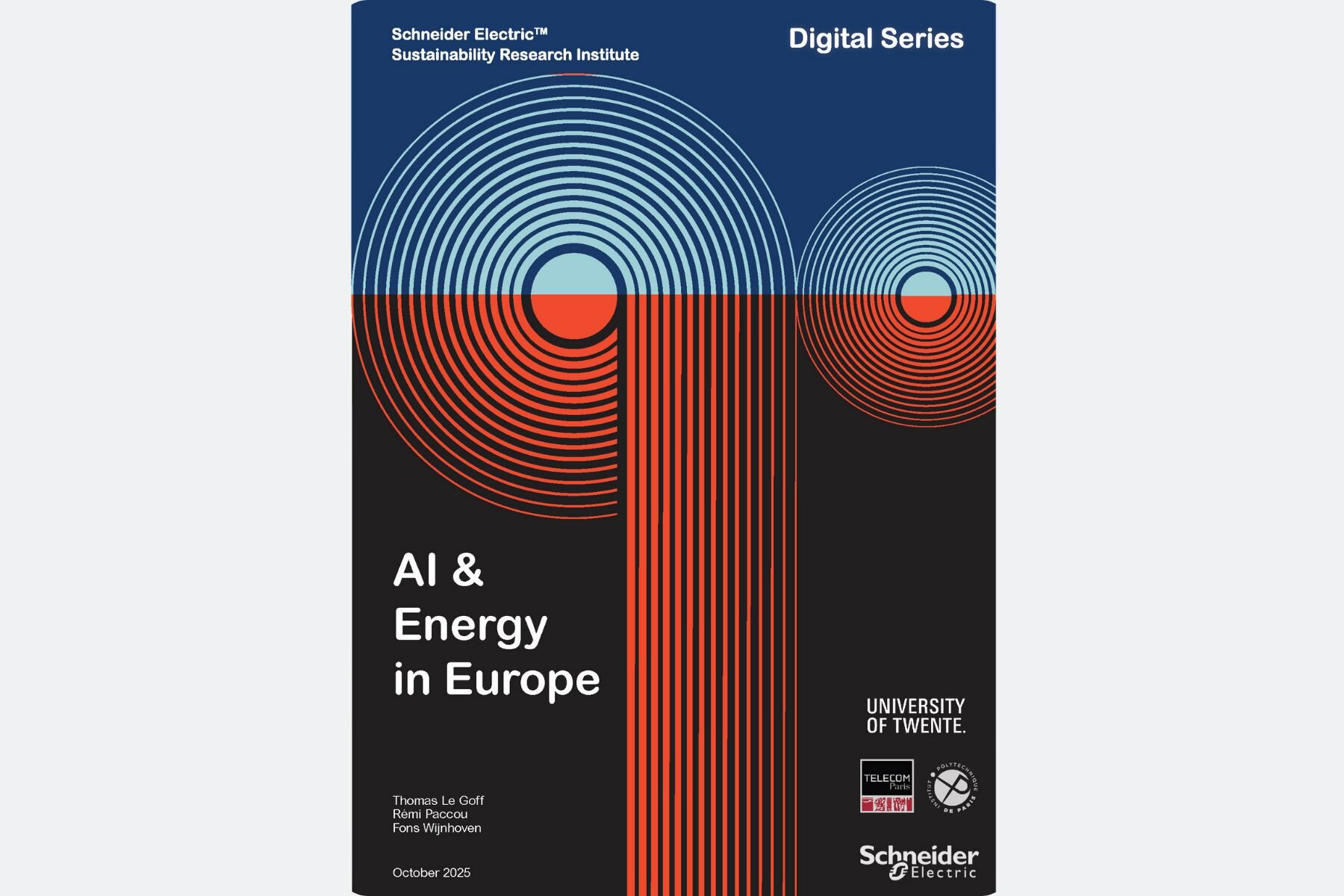AI & Energy in Europe
- By Thomas Le Goff, Rémi Paccou, Fons Wijnhoven
- 05 Nov 2025
- 5 min
“The resilience, sustainability, and efficiency of Europe’s energy systems directly determine the pace at which its digital ambitions can flourish.” - Laura Cozzi, Director of Sustainability, Technology, and Outlooks, IEA
By 2035, European data centers could consume more than 230 TWh of electricity annually — double today's consumption. Much of this surge will be driven by AI, a force reshaping not only Europe's digital economy but the fundamental adequacy and sustainability of its energy infrastructure.
The question for European policymakers is: can the continent harness AI as an engine of competitiveness and innovation while safeguarding energy security and meeting climate commitments? Or will unchecked growth strain grids to breaking point, entrench fossil fuel dependence, and derail the twin digital and climate transitions Europe has staked its future on?
AI workloads — from large language models to sprawling generative compute farms — are already straining electricity systems across the continent. Reserve margins in several European countries have grown dangerously thin. In major data center hubs like Dublin, Amsterdam, and Frankfurt, permitting bottlenecks and grid congestion now threaten a fifth of all planned capacity.
But the challenge extends beyond adequacy. In countries where marginal electricity generation still relies on gas or coal, each additional terawatt-hour of AI demand effectively locks in higher emissions, undermining hard-won climate progress.
While efficiency measures — immersion cooling, waste heat recovery, advanced chip architectures — can help at the margins, the decisive factors remain the carbon intensity of the underlying power mix and the governance frameworks that guide where and how data centers expand.
- Ireland and the Netherlands both face mounting adequacy pressures. In Ireland, data centers already consume more than 20% of national electricity and could exceed 30% by 2030. Heavy reliance on fossil generation keeps carbon intensity above 280 gCO₂/kWh. Moratoria and restrictive connection rules have bought breathing room but effectively freeze growth without addressing the underlying emissions problem.
- France offers a contrasting model. By requiring new connections at 400 kV grid nodes and leveraging its low-carbon nuclear fleet, France maintains an adequacy reserve margin - which signals whether available capacity keeps pace with demand - above the 15% security benchmark, while keeping carbon intensity below 70 gCO₂/kWh, demonstrating that strategic siting and infrastructure planning can align digital expansion with decarbonization.
- Germany, Europe's largest economy, illustrates the costs of governance fragmentation. National ambitions for digital leadership collide with slow-moving permitting processes, transmission bottlenecks, and inconsistent regional siting policies. Germany’s renewables expansion helps contain emissions, but reliance on coal and gas during adequacy stress has produced carbon intensity spikes above 400 gCO2/kWh, among the highest in Western Europe. Adequacy is preserved, but only by effectively constraining AI-related expansion — a brake on competitiveness with no clear offsetting environmental benefit.
These national experiences reveal a fundamental truth: regulation and governance, not technology alone, determine whether AI becomes a catalyst for system resilience or a driver of systemic stress.
Drawing on system dynamics modeling, we can map four plausible trajectories for Europe through 2035.

EU AI Electricity Consumption Forecasts, 2025-2030, in TWh
Source: Schneider Electric Sustainability Research Institute
1. "Sustainable AI" sees growth aligned with decarbonization. Adaptive regulation, strategic siting at low-carbon grid nodes, and robust efficiency standards keep demand within ecological boundaries while supporting innovation (approximately 90 TWh by 2030).
2. "Limits to Growth" emerges when strict compliance requirements and fragmented governance structures constrain expansion. AI scales modestly but Europe loses competitive ground to regions with more accommodating frameworks (approximately 45 TWh by 2030).
3. "Abundance Without Boundaries" describes what happens when deregulation fuels unchecked expansion. AI demand soars beyond what infrastructure can sustainably support, locking in emissions and creating grid instability (approximately 145 TWh by 2030).
4. "Energy Crisis" represents the failure mode: grid overload forces emergency curtailments, electricity rationing, and rolling blackouts. AI growth is capped not by policy choice but by crisis management (collapsing back to approximately 50 TWh by 2030).
These are not predictions. They are policy-dependent futures — the outcomes of choices European leaders will make in the coming years.
Make adequacy the binding constraint.
Expansion decisions must be anchored to adequacy reserve margins, not merely efficiency improvements or abstract capacity targets. Without this discipline, systems drift toward crisis.
Recognize that governance is decisive.
France's experience demonstrates that strict, adaptive siting rules and adequacy-linked connection requirements can reconcile AI growth with sustainability objectives. Ireland and the Netherlands illustrate the costs of permissive oversight. Germany shows how fragmentation undermines both competitiveness and coherent planning.
Understand that efficiency is necessary but insufficient.
Advances in processor architecture, cooling systems, and hybrid energy solutions reduce intensity per computation, but they cannot offset the scale effects of exponential growth. Without adaptive governance, efficiency gains can paradoxically accelerate total demand through rebound effects.
AI will shape Europe's economic trajectory as profoundly as the industrial revolutions that preceded it. But its energy footprint is not a technical inevitability — it is fundamentally a matter of governance choices.
Europe has a choice. One path allows AI expansion to outpace infrastructure readiness, pushing systems toward adequacy crises and climate backsliding. The other embeds adequacy-aware, adaptive regulation that reconciles digital ambition with decarbonization imperatives.
The future of Europe's AI energy landscape will be written in the policy frameworks, siting requirements, and governance structures that shape where and how those data centers can grow.
For a comprehensive analysis, modeling methodology, and closer look at the choice facing Europe, download the full report “AI & Energy in Europe” here.

Latest from the Sustainability Research Institute
Time to power: A generational cycle of modernization in the US
Introducing the integrated Net Present Value framework
Original insights on the decarbonization potential of Brazil through innovation
Demand-pull policy framework for emission intensive industries

